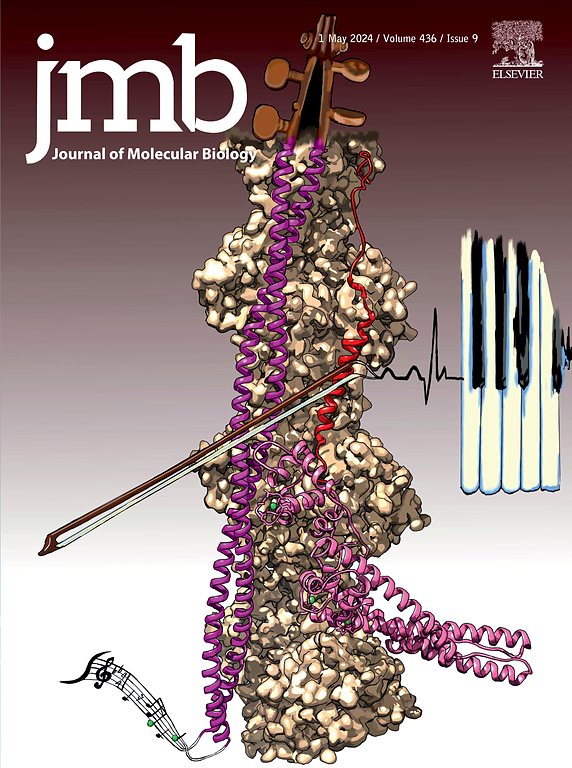Unexpected Richness of the Bacterial Small RNA World
IF 4.7
2区 生物学
Q1 BIOCHEMISTRY & MOLECULAR BIOLOGY
引用次数: 0
Abstract
I stumbled onto a small RNA (sRNA) induced by oxidative stress when I did the “wrong” northern blot experiment as a second-year graduate student. I was so intrigued by the very strong induction of the 109 nt OxyS RNA that I kept working to elucidate its function while carrying out other projects. Over a decade after developing the first OxyS northern, I was able to document that the RNA acts as a regulator. This finding together with concurrent observations about the 91 nt DsrA RNA by Susan Gottesman’s group led to the realization that regulatory sRNAs were far more prevalent in bacteria than initially imagined. I do not think we could have anticipated how integral sRNAs are to regulatory networks in bacteria and how much we would learn about the mechanisms by which these sRNAs regulate gene expression, most commonly through limited base pairing with target mRNAs, chaperoned by the Hfq protein. Our work was greatly facilitated by the collegiality in the bacterial sRNA field and the regular discussions and collaborations between my group and the Gottesman group. Susan and I are both writing overviews but have agreed to emphasize different aspects of the investigation into bacterial sRNAs with the intent that our articles are read in parallel.

细菌小RNA世界的意外丰富性。
读研究生二年级时,我在做“错误的”northern blot实验时,偶然发现了一种由氧化应激诱导的小RNA (sRNA)。我对109 nt OxyS RNA的强大诱导非常感兴趣,因此我一直致力于阐明其功能,同时开展其他项目。在开发出第一个OxyS后的十多年里,我能够证明RNA起着调节作用。这一发现与Susan Gottesman小组对91 nt DsrA RNA的观察相结合,使人们认识到,调节性sRNAs在细菌中比最初想象的要普遍得多。我不认为我们能够预料到sRNAs对细菌中的调节网络有多么重要,以及我们对这些sRNAs调节基因表达的机制有多少了解,最常见的是通过与目标mrna的有限碱基配对,由Hfq蛋白陪伴。细菌sRNA领域的合作以及我的小组和Gottesman小组之间的定期讨论和合作极大地促进了我们的工作。苏珊和我都在写概述,但都同意强调细菌sRNAs研究的不同方面,目的是让我们的文章并行阅读。
本文章由计算机程序翻译,如有差异,请以英文原文为准。
求助全文
约1分钟内获得全文
求助全文
来源期刊

Journal of Molecular Biology
生物-生化与分子生物学
CiteScore
11.30
自引率
1.80%
发文量
412
审稿时长
28 days
期刊介绍:
Journal of Molecular Biology (JMB) provides high quality, comprehensive and broad coverage in all areas of molecular biology. The journal publishes original scientific research papers that provide mechanistic and functional insights and report a significant advance to the field. The journal encourages the submission of multidisciplinary studies that use complementary experimental and computational approaches to address challenging biological questions.
Research areas include but are not limited to: Biomolecular interactions, signaling networks, systems biology; Cell cycle, cell growth, cell differentiation; Cell death, autophagy; Cell signaling and regulation; Chemical biology; Computational biology, in combination with experimental studies; DNA replication, repair, and recombination; Development, regenerative biology, mechanistic and functional studies of stem cells; Epigenetics, chromatin structure and function; Gene expression; Membrane processes, cell surface proteins and cell-cell interactions; Methodological advances, both experimental and theoretical, including databases; Microbiology, virology, and interactions with the host or environment; Microbiota mechanistic and functional studies; Nuclear organization; Post-translational modifications, proteomics; Processing and function of biologically important macromolecules and complexes; Molecular basis of disease; RNA processing, structure and functions of non-coding RNAs, transcription; Sorting, spatiotemporal organization, trafficking; Structural biology; Synthetic biology; Translation, protein folding, chaperones, protein degradation and quality control.
 求助内容:
求助内容: 应助结果提醒方式:
应助结果提醒方式:


